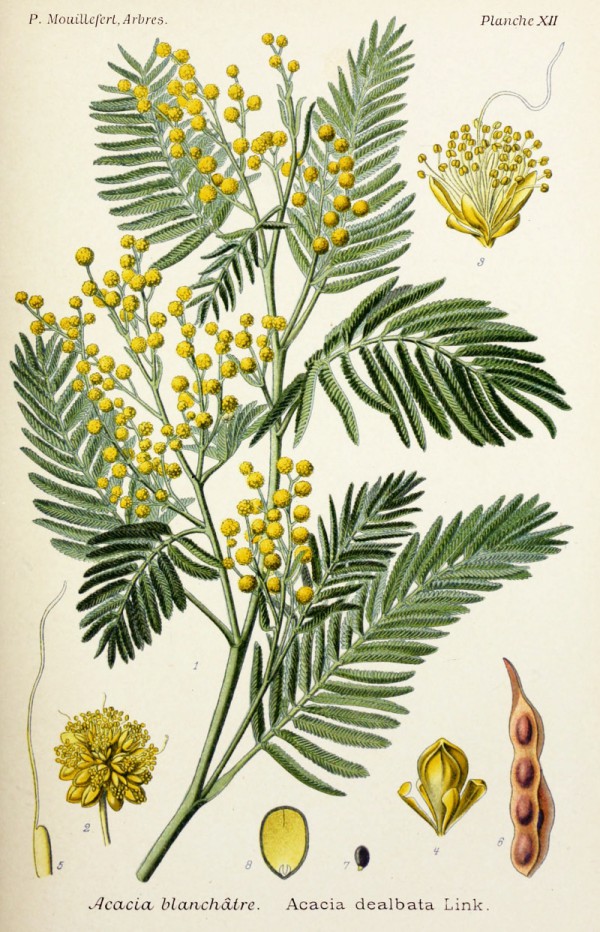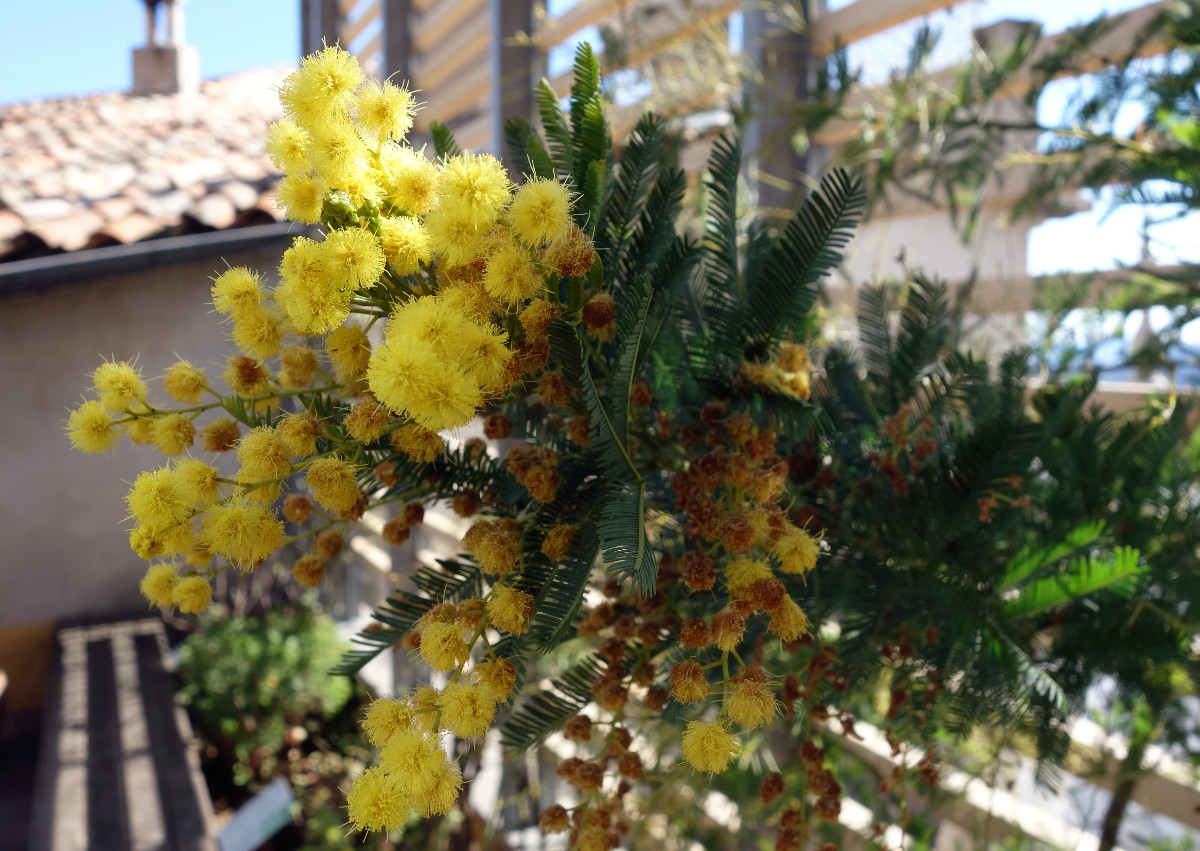Acacia dealbata Link - syn.Acacia decurrens var. dealbata (Link) F.Muell.; Racosperma dealbatum (Link) Pedley - Fabaceae
silver wattle, Silberakazie, Mimose
Shrub or tree,native to Australia, naturalized and cultivated elsewhere; leaves argenteous to greenish, pinnae 10-20, leaflets 26-46 pairs, dense, linear; flowers yellowish or yellow-orange.; legume red-brown or black, glaucous, oblong, flat, 3-8cm long.
http://www.efloras.org/florataxon.aspx?flora_id=2&taxon_id=200011849
Mimosa absolute has the viscosity of sirup and owns a sweet powdery, floral note with a honeyed fresh undertone, dry down reveals violet-like heart note.
„There are several species in the botanical family Acacia that produce fragrant flowers. Just two species, Acacia decurrens and A. farnesiana (Vachellia farnesiana), have uses in perfumery. A. decurrens is appropriately referred to as Mimosa and A. farnesiana as Cassie syn. Sweet Cassie, and not to be confused with Cassia. “
http://www.lgbotanicals.com/Mimosa-Absolute_p_732.html
„Since decades mimosa (Acacia dealbata) absolute oil has been used in the flavor and perfume industry. Today, it finds an application in over 80 perfumes, and its worldwide industrial production is estimated five tons per year…
As the distillate lacks the typical mimosa note, it was not suitable for GC-sniffing analyses. However, the absolute could not be directly used because of the presence of nonvolatile (and odorless) compounds. Thus, HS-SPME with a CAR/PDMS 75 μm fiber (extraction of highly volatile compounds) was chosen as sampling method. Fifty-seven odorant zones were detected by the two sniffers during HS-SPME-GC-sniffing. Thirty-seven compounds could be identified with certainty (LRI, MS, odor comparison, and injection of the reference compound)… Eighteen odorant zones were described as fruity and could be attributed to esters such as ethyl propanoate, butanoate, pentanoate, and hexanoate. Phenylacetaldehyde, 2-phenethyl alcohol, benzyl acetate, and (Z)-jasmone were the main “floral” compounds responsible for four of the thirteen floral zones. Fresh and green notes were perceived, often due to aldehydes (hexanal, heptanal, nonanal, and (E,Z)-nona-2,6-dienal). Three out of five mushroom notes were identified as (Z)-pent-2-en-1-ol, (E)-oct-2-en-1-ol, and oct-1-en-3-ol. Vanillin, methyl and ethyl anisates were identified, contributing to sugar and anise-like odors. Four zones with similar notes could not be identified. The predominance of fruity, floral, fresh, green, mushroom, sugar and anise-like odorant notes is in agreement with the descriptors used for mimosa absolute oil.“
[Chemical composition of French mimosa absolute oil., Perriot, R., Breme, K., Meierhenrich, U.J., Carenini, E., Ferrando, G., Baldovini, N., Journal of agricultural and food chemistry, Vol.58(3), 2010, 1844-1849]

Mouillefert, P., Traité des arbres et arbrissaux, Atlas, t.12 (1892-1898)
http://plantgenera.org/species.php?id_species=1255939

Acacia dealbata flowers, CC BY-SA 3.0, Author: Andreas Kraska
VIDEO: French mimosa (IFF-LMR)
